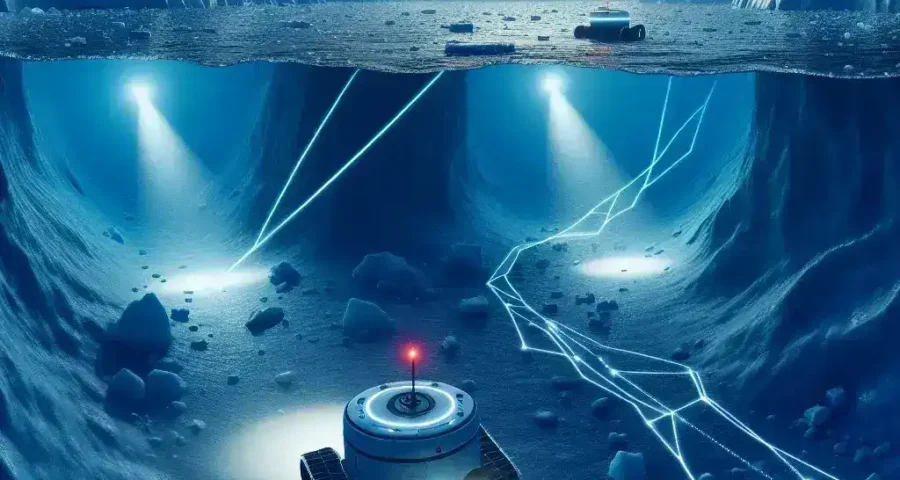Introduction
Climate change has emerged as one of the most pressing challenges of our time, urging scientists to explore innovative solutions to understand its effects. One such frontier is Antarctica, a frozen continent harboring secrets beneath its icy surface. Recent advancements in technology have led to the development of AI-driven robots capable of mapping under ice lakes, providing invaluable data crucial for climate research.
The Role of AI in Climate Research
Artificial Intelligence (AI) is transforming various sectors, including climate science. By integrating AI with robotics, researchers can enhance data collection and analysis, uncovering patterns that have remained hidden due to the harsh conditions in extreme environments. AI algorithms can process large datasets from various sensors, learning from them to make predictions and provide insights.
Benefits of AI-Driven Robots
- Autonomous Operation: AI-driven robots can operate autonomously, allowing them to navigate challenging terrains without human intervention.
- Data Accuracy: Equipped with sensors and advanced algorithms, these robots can collect precise data that is often more reliable than traditional methods.
- Cost Efficiency: Reducing the need for human researchers in dangerous environments lowers operational costs and risks.
- Real-Time Analysis: AI enables the real-time processing of data, allowing researchers to make immediate decisions based on findings.
Mapping Under the Ice: A Technical Overview
The process of mapping under ice lakes involves sophisticated technology. Robots designed for this purpose are equipped with sonar systems, cameras, and environmental sensors capable of operating in frigid temperatures and underwater conditions.
Design and Functionality
AI-driven robots feature a compact design that allows them to maneuver easily in tight spaces beneath the ice. The sonar systems emit sound waves that bounce back from various surfaces, creating detailed maps of the underwater landscape. Cameras provide visual data, while sensors measure temperature, salinity, and other critical parameters.
Data Collection Process
- Deployment: Robots are deployed from research vessels or ice stations, navigating through openings in the ice.
- Mapping: As they traverse the underwater environment, robots gather data, mapping the topography and recording environmental conditions.
- Data Transmission: Collected data is transmitted back to researchers in real-time for analysis.
Case Studies: Successful Implementations
Several research projects have successfully utilized AI-driven robots to map under ice lakes in Antarctica. These pioneering efforts have yielded significant findings regarding climate change and its impact on global sea levels.
The Whillans Ice Stream Subglacial Access Research Drilling (WISSARD) Project
This project aimed to explore subglacial environments, employing robots to map and analyze subglacial lakes. The findings revealed how subglacial water systems influence ice dynamics.
The Subglacial Antarctic Lakes Scientific Access (SALSA) Project
By deploying autonomous underwater vehicles, SALSA aims to investigate the biological and chemical compositions of subglacial lakes, offering insights into life in extreme conditions.
Future Predictions and Implications
The future of AI-driven robots in climate research is promising. As technology advances, robots will become more efficient, capable of deeper exploration and more complex data analysis.
Potential Developments
- Increased Autonomy: Future robots may operate independently for extended periods, navigating difficult terrains while collecting extensive datasets.
- Enhanced AI Algorithms: Improved algorithms will allow robots to learn from their environment, adapting their strategies for data collection.
- Greater Collaboration: Robots may work in tandem with human researchers, complementing each other’s strengths for more comprehensive studies.
Challenges and Ethical Considerations
Despite their advantages, AI-driven robots face challenges. The harsh Antarctic environment can damage equipment, and the complexity of the ecosystems studied raises ethical questions regarding intervention and data collection.
Environmental Impact
Researchers must consider the potential impact of robotic operations on fragile ecosystems. Developing guidelines for responsible data collection is essential to minimize disturbance to natural habitats.
Data Privacy and Usage
As robots collect vast amounts of data, issues of privacy and usage arise. Ensuring data is used ethically and responsibly is imperative in maintaining scientific integrity.
Conclusion
The integration of AI-driven robots in mapping under ice lakes in Antarctica represents a groundbreaking advancement in climate research. By pioneering new methods of data collection and analysis, these robots provide crucial insights into climate change, helping to shape our understanding of the planet’s future. As we continue to explore and innovate, the potential for AI-driven robots to transform climate science remains boundless.
Call to Action
As we face the challenges of climate change, supporting and following advancements in technology such as AI-driven robotics in research can lead to solutions that protect our planet. Stay informed about ongoing research and consider engaging with organizations focused on climate science and environmental preservation.


Leave a Reply